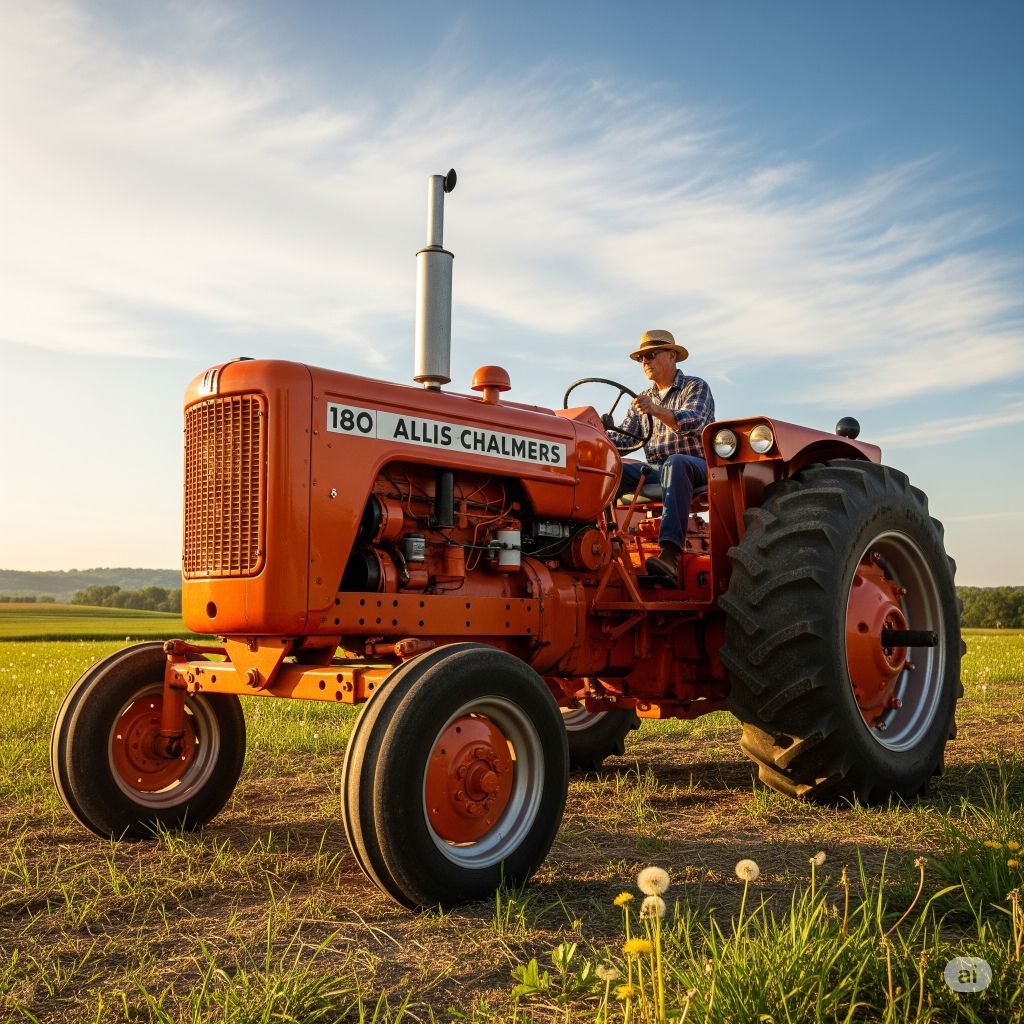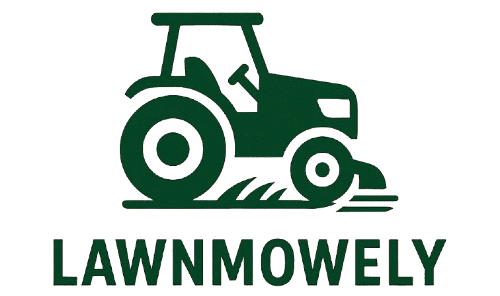
The Allis Chalmers 180, produced from 1967 to 1973, is a well-regarded utility tractor known for its simplicity, reliability, and rugged performance. However, like all machinery, it’s not without its quirks and age-related issues. In this in-depth guide, we’ll cover common Allis Chalmers 180 problems with the , proven fixes, technical specs, user FAQs, and more.
Common Problems with the Allis Chalmers 180
1. Starting Issues
Symptoms:
- Slow or no crank
- Clicking sound with key turn
- Hard starting in cold weather
Causes:
- Weak or dead battery
- Faulty starter solenoid
- Dirty battery terminals or loose wiring
- Poor ground connection
Fixes:
- Test and replace the battery if needed (12V system)
- Clean battery terminals and check all wiring connections
- Replace the starter or solenoid if faulty
- Use a block heater in cold weather for easier starts
2. Hydraulic System Problems
Symptoms:
- Loader or lift arms won’t raise/lower
- Jerky hydraulic movement
- Hydraulic oil leaks
Causes:
- Low hydraulic fluid level
- Dirty or clogged hydraulic filters
- Worn pump or leaky seals
Fixes:
- Check fluid levels and top up with the correct hydraulic fluid
- Replace or clean hydraulic filters
- Inspect and replace seals or gaskets
- Rebuild or replace worn hydraulic pump
3. Transmission Slipping or Stuck in Gear
Symptoms:
- Difficulty shifting
- Tractor moves slowly even at high RPMs
- Grinding noises during gear change
Causes:
- Worn clutch
- Incorrect transmission fluid
- Shift linkage misalignment
Fixes:
- Adjust or replace the clutch if slipping
- Drain and refill with proper transmission fluid
- Inspect and lubricate shift linkage and linkage pins
4. Overheating
Symptoms:
- Temperature gauge in red zone
- Steam from radiator
- Coolant boiling over
Causes:
- Low coolant level
- Dirty radiator fins
- Faulty thermostat or water pump
Fixes:
- Check coolant level and refill as needed
- Pressure wash radiator fins carefully
- Replace thermostat or water pump if not functioning
- Make sure fan belt is properly tensioned
5. PTO Not Engaging or Disengaging
Symptoms:
- PTO shaft does not turn
- Cannot disengage PTO
- Noise or grinding when engaging
Causes:
- PTO clutch wear or misadjustment
- Linkage issues
- Broken internal PTO gears
Fixes:
- Adjust the PTO clutch mechanism
- Inspect and lubricate the PTO linkage
- If gears are stripped or damaged, a rebuild may be required
6. Brake Issues
Symptoms:
- Weak or no braking power
- Pulling to one side while braking
- Brake pedal sinking to floor
Causes:
- Worn brake pads or discs
- Brake fluid leak (in models with wet disc brakes)
- Sticking linkages
Fixes:
- Replace brake components as needed
- Check and refill brake fluid reservoir
- Clean and lubricate brake linkages
7. Diesel Engine Performance Problems
Symptoms:
- Black smoke from exhaust
- Loss of power under load
- Rough idle
Causes:
- Dirty air filters
- Faulty injectors or injection pump
- Bad fuel or water in fuel
Fixes:
- Replace air filters
- Test injectors and pump—rebuild or replace as necessary
- Drain and clean fuel tank; use clean diesel with additive if needed
Allis Chalmers 180 Specifications
| Category | Details |
|---|---|
| Manufacturer | Allis Chalmers |
| Production Years | 1967 – 1973 |
| Engine | 3.7L 4-cyl diesel or gas (AC 248 cu in) |
| Horsepower | Approx. 55–63 HP PTO (varies by fuel type) |
| Transmission | 8-speed gear drive (4 forward, 4 reverse) |
| Fuel Capacity | ~23 gallons (87 liters) |
| Hydraulic System | Closed center |
| PTO | Independent, 540 RPM |
| Weight | ~5,600 lbs (2540 kg) |
| Wheelbase | 93 inches |
| Rear Lift Capacity | Approx. 3,500 lbs |
| Brakes | Mechanical disc brakes |
Allis Chalmers 180 Maintenance Tips
- Regular Oil Changes: Use high-quality diesel-rated oil (15W-40 in most cases).
- Check Belts & Hoses: Look for cracks, leaks, and wear every 50-100 hours.
- Keep Radiator Clean: Prevent overheating by clearing debris often.
- Fuel Filter Maintenance: Replace every 200 hours or sooner if using older diesel.
- Grease Points: Grease front axles, loader arms, and steering linkages regularly.
- Use Additives in Diesel: Especially helpful for cold starts or if storage tanks gather moisture.
Frequently Asked Questions (FAQs)
Q1. Is the Allis Chalmers 180 reliable for modern-day farming?
Yes, with proper maintenance, the 180 remains a workhorse on small farms and properties. Its mechanical simplicity makes repairs easier for DIYers.
Q2. Can you still get parts for the AC 180?
Yes, many parts—both OEM and aftermarket—are available through dealers, salvage yards, and online retailers like Steiner Tractor and Yesterday’s Tractors.
Q3. What type of hydraulic fluid does the Allis 180 use?
Use Allis-Chalmers 821 or compatible hydraulic fluid. Some owners use Universal Tractor Fluid (UTF) as a substitute.
Q4. Is the 180 compatible with modern attachments?
It depends on the attachment’s PTO requirements and lift capacity. Many Category I and II 3-point implements work well with this tractor.
Q5. What’s better, the diesel or gas version?
The diesel is generally preferred for fuel economy and torque, but the gasoline version is easier to start in extreme cold without pre-heaters.
Pros and Cons of the Allis Chalmers 180
✅ Pros:
- Rugged construction and simplicity
- Affordable on the used market
- Easy to work on for DIY mechanics
- Decent PTO power for most 6–8 foot implements
❌ Cons:
- No cab or ROPS in early models (can be retrofitted)
- Poor visibility with front loaders
- Manual steering on early units is heavy
- Parts for some specific subcomponents can be harder to source
Helpful Owner Tips
- Add an aftermarket temperature gauge—originals often fail over time.
- Consider upgrading to power steering (if not equipped) for loader use.
- Install an inline fuel filter to reduce injector problems.
- Replace the original seat with a suspension seat for better comfort.
- Carry extra belts, fuses, and a basic toolkit—especially if using in remote fields.
Conclusion
The Allis Chalmers 180 remains a popular and practical option for hobby farmers, ranchers, and restoration enthusiasts. While it does come with age-related issues like starting problems, hydraulic hiccups, and occasional transmission quirks, these are often easily addressed with basic mechanical skills. With proper maintenance and some modern upgrades, the AC 180 can serve as a reliable utility tractor for decades to come.

I’m David man behind Lawn Mowerly; I’ve been dealing with lawnmowers and Tractors with my father since I was a kid. I know every make and model and what each one is capable of and love helping people find the perfect equipment for their needs.
